
Golf is a game that can be intimidating for new players. A new golfer might think they’ll need to be strong, athletic, and have the amazing hand-eye coordination to stand a chance of playing this game.
However, that isn’t the case! So even if you don’t think you have these abilities or are not athletic, don’t let it stop you from trying this fun and challenging sport out! You might surprise yourself.
Being able to play Golf takes practice, patience, and grit – all things that will strengthen your character as well as your golf game. It may seem like an intimidating sport at first glance, but once you learn the basics, it’s quite simple –– especially if you have the right tips and tricks to get started!
Top Golf Advisor is here to make things easier to understand and help you start your basics on the sport with this article that covers everything you need to know about Golf.
Before we start the blog, It’s essential to understand important terms in the game, so you don’t feel left out in the field.
Golf Terminology for Beginners
Here is a list of common Golf terms that may sound foreign to beginners. Moreover, These terms can lend a hand in understanding the game more easily.

Golf Course Terms:
- Golf Tee – the wooden stake that you use to commence the hole with your golf ball.
- Golf Tee Box – the region of the hole where you first play the ball.
- Fairway – the area of the golf course that is closest to the green and typically used for putting.
- The green – is the area of fluffy, soft ground around the hole.
- The rough – both sides of the fairway’s rugged terrain. Long grass and trees are common in this area.
- Bunker –Usually, a sand-filled ditch that encircles the green..
- Hazard –ponds, bunkers, trees, and streams. Anything standing in the way of putting the golf ball in the hole successfully.
Beginners Guide To Golf; Scoring Terms for Golf:
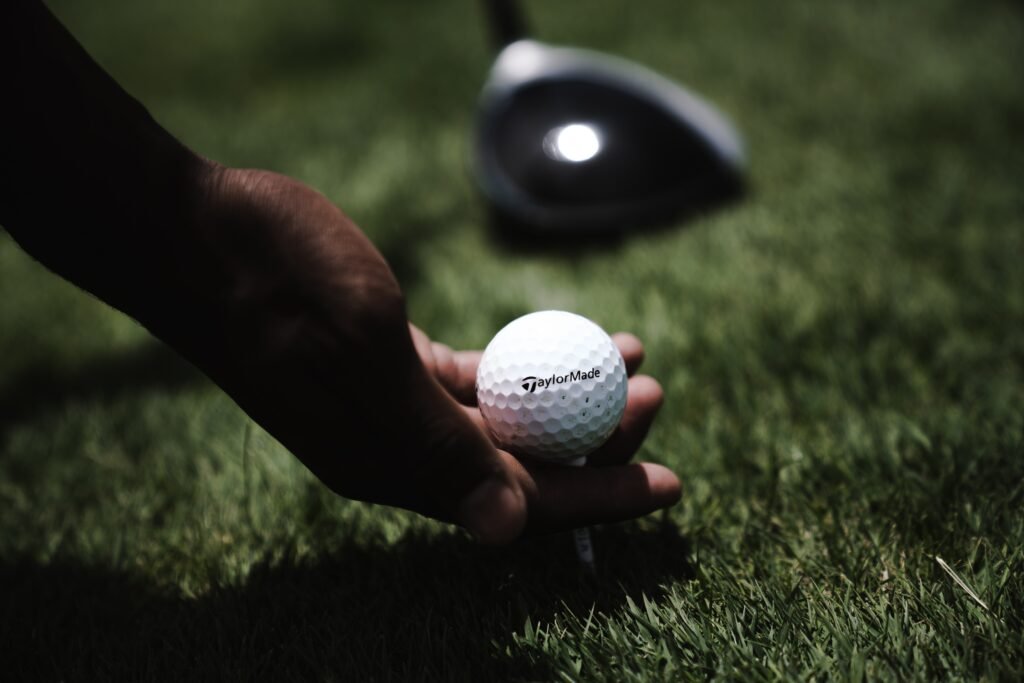
- Ace – “A hole in one”.
- Birdie – one shot below par ( also called a double eagle).
- Eagle – 2 strokes under par.
- Par – The standard number of strokes to get the golf ball from the tee to the hole.
- Bogey – one stroke over par
- Double Bogey – two strokes over par.
- Triple Bogey – three strokes above par.
Basics of Golf; Rules & Etiquettes
A game of Golf can be played by anyone of any age, gender, race, or height. It’s easy to learn, but it takes practice and dedication to become good.
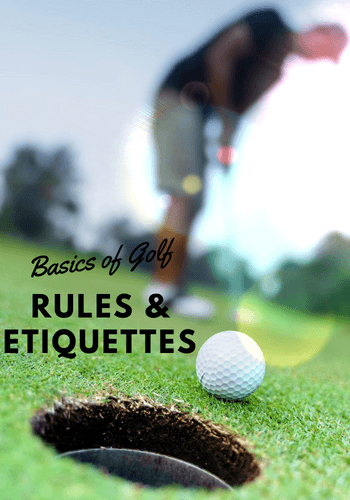
The basics of golf rules and etiquette are simple: you have to hit a ball with a club onto the green. Golfers typically hit the ball with clubs until they reach the green. If you make a mistake, you can drop your club and pick up another one. According to USGA.
You need to keep your ball out of the water, hazards (like trees), and other hazards on the course (like sand traps). Once you’ve reached the green, you must put the ball into the hole. You can’t reuse the same tee box twice in a round.
You also have to follow certain etiquette rules:
- Never yell at or argue with other players
- Respect your opponent’s space
- Don’t touch other people’s golf equipment
- Always clean up after yourself when you finish playing.
There are also many rules for different golf courses and tournaments. Most courses offer to everyone; others are only open to members of certain clubs or organizations. Some tournaments have certain prerequisites before joining; others have age restrictions or dress codes for participants.
Those who play Golf are typically friendly and courteous toward their fellow players – except when competing against each other!
How To Play Golf
The question arises for every beginner on how to play golf. A standard Golf game is played on a 72- or 18-hole course. Once you arrive at the course, you must select the correct tee box to begin your round. The tee box determines the length of your drive.
As a beginner, you should select the middle tee box to get a feel for all three shots, including the drive, the approach, and the pitching shot.
Once on the fairway, you must decide what club you will use for your next shot. You will select this club based on the distance from the tee box to the pin.
However, words can’t cope with visuals. Therefore, follow the link to see a video demonstration of how to properly play Golf outdoors instead of pinning on words.
The Putting: The most important part of the game!
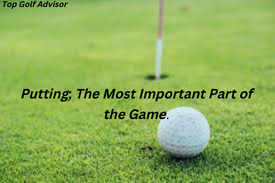
Putting is the most important part of the game and the only part you control. Once the ball is in motion, the other players on the course impact the outcome.
You need to keep the ball out of the rough and in the hole to increase your score. There are many different putting techniques. We recommend choosing one and practicing until it becomes a habit.
Many factors go into a good putt. Keep these tips in mind:
- Stay focused: Stay in the moment and clear your mind of distractions.
- Keep your eyes on the ball: Look directly at the ball and focus on the line you want the ball to travel.
- Use your legs: The power for your stroke comes from your legs. Be sure to stay balanced and use a controlled putting stroke.
- Keep your head down: Never look up when putting. You’ll lose focus and most likely miss the shot.
Grip and Stroke Differences
Golfers can choose from many different grips depending on their preferences and strengths. A neutral grip is the most commonly used type and can be used by beginners and advanced golfers.
A player with a weak grip will generally grip the club too tightly, causing the club head to strike the ball before it is at rest and leading to a poor shot.
Stroke: A golfer’s swing comes from their core. When you swing, your hips should rotate first, and your upper body should follow. You should feel like your follow-through is ending behind your body.
Choosing a Club
A golfer’s club selection must be based on the distance of their shot and the lie of the land.

Shot distance: A golfer must know the distance they want the ball to travel to select the appropriate club. Tee markers are helpful while learning.
The lie of the land: Some golf holes have slopes; some have bumps or depressions. A golfer must take these into account when selecting a club.
How to Grip a Golf Club
Golf is an individual sport, meaning you won’t be playing against another team member like you would during a game of tennis.
You need to take responsibility for every aspect of your game. Most importantly, you will be in charge of your shots. To successfully execute a shot, you must first grip the golf club correctly.
Begin by holding the golf club with both hands. Make sure both of your thumbs are facing away from you. You should place your left hand above your right hand and vice versa.
Next, squeeze the golf club with both hands and keep your elbows close to your body.
This will ensure that both arms are in sync while swinging the club. Once you properly grip the golf club, you can move on to the stance.
Hear Again, Grip Again, Set Up Again
Hear again: Listen to the sounds of the course: the wind, birds, people talking. It’s amazing how quiet it gets when you’re on the course.
It’s crucial to keep your head in the game and not get distracted.
Grip again: Remember how your grip feels. Getting in a hurry is easy; get excited and grip the club too hard.
Set up again: Focus on your posture. Stand upright but relaxed, knees bent, spine straight, and shoulders back.
Swing Basics for Beginners
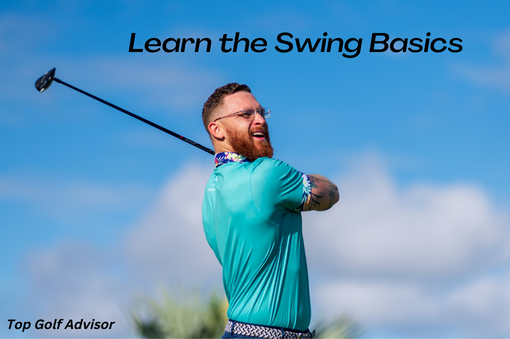
As a beginner, your priority is to develop a consistent ball-striking pattern with minimal effort. Aim to contact the ball inside the center of your clubface at the address.
Gently move your hips and shoulders throughout the full length of your backswing, and then release the club through the ball with a controlled acceleration on the forward swing.
Once you’ve mastered the basics, you can begin to fine-tune other swing elements, such as distance control, tempo, and club selection.
Distance control is the ability to predict how far the ball will travel after impact. Begin by completing a pre-shot routine. It will make you focus on the present moment and will assist you in establishing a consistent strike.
Types of Shots in Golf
The game of Golf has a set of rules and regulations that are designed to challenge even the most seasoned players. With that said, Golf is a sport that requires precision, strategy, and patience.
To complete a full round of Golf, you will need to know how to execute five different shots. These shots are the drive, approach, pitching, and sand shots.
- Drive – This is the shot you will hit from the tee box. You must hit the ball long enough to get to the fairway.
- Approach – The approach shot is used when you are within 100 yards of the green. You will need to approach the ball with a higher trajectory and softer swing to ensure it does not go too long and miss the green.
- Pitching – This shot is used when you are within 80 yards of the green. You will need to use a shorter club and a steeper trajectory to ensure the ball does not go beyond the pin.
- Putting – The putting shot is used when standing on the green. You will need to put the ball in the hole with as few putts as possible.
- Sand Shots – This is the shot you will need to use when you find yourself in a bunker. You must hit the ball out of the bunker and onto the green.
Dos & Don’ts of Playing Golf as a Beginner
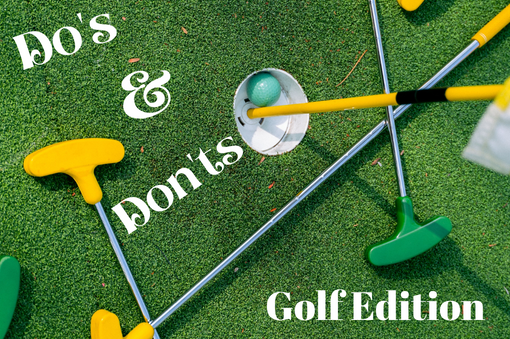
As a beginner, taking the plunge is always the hardest part. Some people fear the embarrassment of messing things up without proper guidance. Therefore, to ensure you don’t feel left out. Here’s a small list of dos and don’ts for playing Golf.
Do’s
- Beginning on a practice range rather than the golf course is ideal. The range is the ideal location to become accustomed to the game. You are not obliged to perform up to par and are free to swing the ball to develop the right grip.
- Get a solid swing foundation by working with a pro. You may discover a pro near you by getting accustomed to fellow golfers.
- Begin your practice by learning how to grip the club properly.
- Make sure to bend from your hips.
- On the backswing, tuck your lead shoulder under your chin and finish facing the target with your face, chest, and hips.
- Before concentrating on your long irons (3-iron, 4-iron, etc.) and your hybrids, fairway woods, and driver focus on the short game by chipping and putting.
- Make it a celebration by inviting others to study alongside you! Find a TopGolf near you, or toast a successful practice round with a few drinks at the clubhouse bar. Golf is challenging. You deserve it.
- Buy some gloves. Although some prefer to play without one, they are used by most golfers. Plus, you’ll probably need protection for your calloused palm.
- Purchase some appropriate golf clothing.
- Play as soon as you can. When it’s your turn, be prepared to make your shot at all times.
- Take some time out to memorize basic rules and ethics.
- So that you can locate your ball, mark it on the green.
- Accept invitations to join other organizations. Golf is a social sport that is an excellent way to meet new people.
- Maintained the course by ranking bunkers, replacing divots, and repairing ball marks on the green.
Don’ts of Playing Golf
- Don’t concern yourself with how others are playing. The game is difficult to approach, so don’t pressure yourself.
- Avoid making your spouse or friends your mentor. Things can heat up instantly, ruining the game for both parties.
- Refrain from keeping your head down still. Follow it through the rest of your body.
- Never bend from your knee.
- Do not stay flat-footed throughout the impact.
- No need to buy golfing equipment until you land your swinging techniques every time.
- Refrain from playing directly on the course until you get the ball airborne.
- Don’t spend time looking for your ball on the course. Additionally, never pick up just any ball on the course.
What are Three good Golf Tips for Beginners?
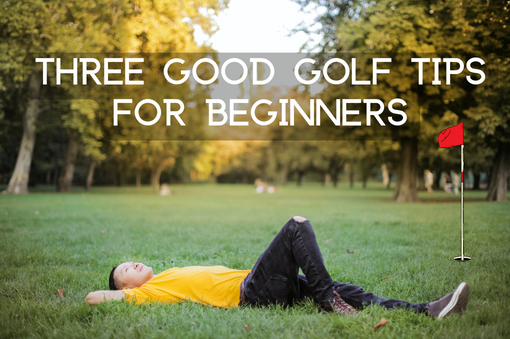
As beginners, there’s no better way to learn the sport than by getting key tips from professionals. Therefore, we recommend watching this video below to get a more in-depth view of consistency, confidence, and an idea of how to swing the right way.
Moreover, let’s walk down three key golf tips every beginner should know in our beginners guide to golf.
- Improving Your Grip
The grip, in our opinion, is the component of the golf swing that is most crucial for beginners.
If you don’t know how to hold the golf club properly, it will be very difficult to make good shots and score well once you begin playing on a course.
- Hold your club from the side rather than the bottom.
To begin with, grip the golf club from the side rather than underneath when you attempt to hold it.
Going into your golf posture and then clapping your hands together might help you understand how your hands should travel towards the golf club.
To avoid causing serious problems, we strongly suggest not gripping the golf club from underneath.
- Put the club in the proper hand-holding position.
The golf club handle in your lead hand should extend from the base of your index finger to the back of your hand’s heel pad.
If you have the proper golf grip, you should be able to support the club with just your index finger wrapped around the handle.
The top two knuckles on your lead hand and the logo on your glove should be visible from where you are standing once you have set the club down on the ground.
You must be in this position to have complete control of the club while you swing the golf club.
Many people mishandle the lead hand’s grip, which can make a significant impact.
2. As you backswing, make sure the club face opens.
Your clubface should be facing away from you as your backswing.
The club face should face the TARGET as you move and strike the ball.
The club face should then point BACKWARDS as you rotate through the ball into your finish.
The main problem we observe with some golfers is their constant effort to maintain the club’s face towards the ball.
They believe that I must swing the club straight to hit the ball straight, but that is not the case.
The same is true of your golf swing’s arc. Many people attempt to strike it straight by swinging straight backwards.
Instead, we want to swing back in an upward motion and then descend in a downward motion roughly parallel to the upward motion. You should swing through on an upward arc around the body.
3. Turn – Shift- Turn
Practice the turn-shift-turn drill as a pretty easy tip you can use at home without a golf club.
Put your hands over your shoulders and adopt a golfing stance while gazing down over a real golf ball or, if necessary, an imaginary one.
Then, when you make your backswing, spin so that your back is facing the target. Next, you shift to your left leg and turn so your chest faces the target.
Repeat this pattern often to teach your body how your swing should move and feel throughout.
You can then use this exercise to improve your swinging rhythm while practicing with real golf balls at full speed.
Golf Attire for Beginners
Sure, some of the smaller, more laid-back clubs don’t care if you show up to play golf in jeans and a shirt, but the more illustrious, tradition-rich clubs do insist that their members follow their customs. Because who wants to run into Ernie Els while sporting flip-flops?
Polo Shirt For the WIN
A reliable polo shirt always comes through during a golf game. It’s the safest option for a newbie when starting on the course. However, make sure to tuck in your shirt to complete the professional look. Additionally, always keep in mind the weather you’re playing in and choose your attire accordingly.
Shorts for Golf
We strongly urge newcomers to never play golf in football shorts or cargo pants. Firstly, it displays a slaggy look. The best option for beginners is to choose golf pants or trousers. It helps you look professional and not like some wannabe that isn’t serious about the game.
What Equipment is Needed to Play Golf?
First and foremost, you’ll need to decide on the type of golf club you want to use. Standard golf clubs are split into two categories: woods and irons.
Woods are long-handled clubs used to hit the ball out of rough, sand, and water hazards. Irons are short-handled clubs used for hitting the ball from the normal grass areas of the course.
There are different types of clubs within each category. A standard set usually consists of 8 clubs:
- A putter.
- Two kinds of wood.
- A pitching wedge.
- Three irons (each numbered from one to nine).
Beginner golfers usually start with the standard set and add clubs as they progress in the sport.
There are also hybrid clubs, which feature the best of both woods and irons. They are used for hitting shots off the normal grass areas of the course as well as replacing a sand wedge in certain situations.
How to Choose the Right Golf Equipment?
Playing Golf isn’t hard; however, choosing the right golf equipment is entirely different. So, how does a newbie golfer figure out the right equipment for himself without wasting money?
Easily follow the steps below:
- Test out the Products; the manager at the sports goods store will show a diverse range of products while boasting about their benefits. Don’t allow them to cloud your judgment. Test the equipment and form your own opinion.
- Pick Up Shorter Drive; When you initially begin, it matters what kind of clubs you purchase. Because they are a little easier to use, starter clubs are the cause. You’ll have some leeway if your swing and contact with the ball aren’t just right. Clubs for beginners have longer shafts and larger clubfaces. No matter how you hit the ball, its design makes it simpler for you to launch it into the air. You can practice improving your golfing technique without feeling discouraged and giving up.
- Don’t Buy Full Bundle: Many sporting goods retailers may attempt to convince you to buy the full set of clubs at once. You don’t need the full set of clubs at the start. Purchase a half-set designed with novice golfers in mind. They won’t be as intimidating to use as some clubs included in the full bundle, and they’ll be easier on your golf equipment budget. You can upgrade your half set of clubs or exchange it for the whole set as you improve and refine your technique.
How Much Does Golf Equipment Cost
The golf equipment cost and overall sets can vary depending on the brands and quality of the product. Therefore, it’s essential to understand the costs per product. Hence. Here is a table to clarify the costs and offer a better understanding.
| COST OF CLUBS | FOR MEN | FOR WOMEN | FOR KIDS | |||
| Right Hand | Left Hand | Right Hand | Left Hand | Right Hand | Left Hand | |
| Complete Sets | $355 | $335 | $367 | $302 | $189 | $224 |
| Fairway Woods | $242 | $259 | $185 | $189 | $39 | $35 |
| Hybrids &Utility Clubs | $195 | $198 | $180 | $143 | $45 | $47 |
| Drivers | $305 | $354 | $315 | $293 | $91 | $73 |
| Wedges | $111 | $135 | $118 | $128 | $50 | $63 |
| Putters | $162 | $188 | $73 | $80 | $31 | $28 |
| Irons | $886 | $671 | $612 | $713 | $33 As per Club |
Beginners Guide to Golf; Best Golf Putter
The putter is undoubtedly the most crucial club in the bag at every level of play, but it is especially crucial for beginning golfers because making more putts may save a tonne of shots.
One of the most important considerations for beginning golfers when purchasing a new putter is forgiveness. Beginners frequently have trouble hitting the ball in the middle of the face, and they typically need assistance keeping the clubface straight throughout the stroke rather than twisting it.
Mallet putters are therefore the best option since they provide forgiveness for off-center strikes, allow weight to be spread evenly around the club head to reduce twisting, and also provide obvious alignment advantages that can help you increase your accuracy on the greens.
Keeping in mind the information, below is a list of putters that are best suited for beginners in golf.
- Ping 2021 Fetch Putter
- Odyssey White Hot OG 5 Putter
- Taylormade TP HYDRO Blast Bandon 3 Putter
- Cleveland Frontline Elevado Putter
- Cobra King 3D Print Putter
- Wilson Staff Infinite Buckingham Putter
Golf Courses for Beginners
In America, about 25% of the courses are entirely private. And in 2020, when Golf’s popularity increased, some semi-private courses—those with members but also allow some public play

was those with members but also allow some public play—was closed to non-members.
You must first ascertain which courses in your area permit public and visitor play and which do not. Firstly, course classifications include private, semi-private, public, municipal, and resort.
If the course is semi-private, you must look up available online tee times and call the pro shop to learn about scheduling limitations.
When Should You Book a Tee Time?
The procedure of a tee sheet varies depending on the course. Tee times for most nearby public or municipal courses are only posted 5-7 days in advance.
That window may range from 14 to 90 days in advance for superior courses that attract more visitor play. Tee times can frequently be reserved for resort courses six to twelve months in advance.
The bottom line: It’s important to find out when the tee sheet opens and reserve the time as soon as possible if you wish to play during busy times. Tee times for the busiest courses in the nation may fill up in minutes.
How Long Does It Take for A Beginner to Learn Golf?
Our best bet; is six months. Yes, that’s right, it takes a beginner at least six months to hit the ball right. Although the sport may seem simple and easy to learn, the art of swinging, putting, and ensuring the ball meets the target is pretty underrated.
More Importantly, hand-eye coordination plays a major role in Golf and frequently gets overlooked. Hence, this results in long-term practice sessions.
Furthermore, don’t worry about mastering the sports in a day. Learn the rules and etiquette, socialize, and most importantly, enjoy the game without any pressure.
Beginners Guide To Golf; How Often Should You Play?
Golf beginners should strive for three days of practice per week. These practice sessions don’t have to last very long; they can only be a half-hour of chipping or putting practice. How much better you become at Golf directly relates to how much practice you put in.
How Much Does it Cost to Start Golf for Beginners?
Beginner sets range in price from $150 to $1000. Beginner golf sets are often fairly flexible and low in weight. A beginner’s kit can include a golf bag and all the equipment needed to get out on the course.
Undoubtedly, Golf is among the most costly sports in the world. Before you even get to the course and pay your green fees, you must purchase clubs, shoes, balls, carts, and bags.
There are always ways to participate more affordably, such as using an old set or used set of clubs, playing during off-peak hours, and frequenting the driving range.
Why is Golf the Best Sport?
Regarding recreational activities, Golf is one of the most challenging and thought-provoking. Few other sports like Golf can test an individual’s skill and patience. Golf requires precision, strategy, and, above all, patience.

Regardless if you’re new or have been itching to get back on the green, here’s a list of reasons that will change your views on why Golf is the best sport to choose.
- Outdoor Greatness
One advantage of playing Golf is the liberty of spending time outside. The awards include beautiful scenery, good exercise, and fresh mountain air. From sunrise to sunset, the possibilities of encountering the wonders of wildlife are countless.
- It Doesn’t Tire You Out Like Other Sports
Unlike basketball, football, and tennis, Golf doesn’t easily exhaust its players. You can spend hours out on the course and still stay insatiable. Moreover, when it comes to Golf, it’s you against you. Although you can get in touch with other players and have a friendly match, nothing aggressive is similar to other outdoor games.
- Golf Plays by the Rules
Not every game plays by the rules. However, when it comes to Golf, that’s what the players need to focus on. There’s no cheating involved in this game. Hence, beginners must perfect their swinging techniques to hit the ball right into the hole.
- No Age Limit
It’s one of the only games that offers people of all ages the liberty to come on the course to play. No restrictions forbid anyone from entering the field (except for club members). Moreover, it teaches discipline, which is ideal for small kids to adopt early.
- Fastest Growing Sport Among U.S Residents.
According to the National Golf Foundation, almost 37.5 Million people play Golf both on-course and off-course. Including 12. 4 million who solely participated in off-course golf activities.
The young adult category is by far the sport’s biggest customer age range, with only 6.1 Million adults participating on-course, while 4.8 Million adults remain off-course.
Since the Pandemic, this sport’s volume of numbers has rapidly kept increasing. Hence, making it one of the best sports to step foot in the current times.
What is the Benefit of Playing Golf?
About 55 million individuals worldwide play Golf on 32,000 different courses. The notion that all of these folks might be significantly improving their health, as a result, is much more astounding than this!
The sport offers physical and mental health benefits apart from an overall luxury experience. Here’s a list of benefits beginners and long-term players can take advantage of during the course.

- Mental Well-being
Golf is great for your mental health. Along with many other advantages for emotional stability, it keeps the mind active and fosters important human contact.
- It Keeps You Socially Active
Golf can be a fantastic social pastime in addition to being a fiercely competitive sport (sometimes).
Golf clubs once had a reputation as the exclusive preserve of the wealthy privileged. Thankfully, this reputation is completely outdated because the game is accessible to gamers of all classes, creeds, and financial backgrounds.
Modern golf clubs are friendly to newcomers, and many seasoned players are willing to share advice with novices. The golf clubhouse is a great place to socialize, meet people from all walks of life, and make new friends.
- Easy to Learn
It is simple and affordable to start playing Golf. Most golf courses and “pay as you play” facilities provide reasonable rates for renting clubs and equipment.
it is prudent to obtain a decent degree of ability through practice and instruction, to prevent being frustrated (and upsetting other players) while entering the course,
- It Keeps you Physically Fit
In addition to mental health issues, playing a game of Golf can be a fantastic addition to a physical training regimen for players of all ages and genders.
- Golf Gives you a Shot of Serotonin.
Getting a fresh outdoor walk on plush green fields can give you a shot of serotonin and relieve heavy stress and anxiety. People can let go of their day-to-day life by going for a round of Golf with a relaxing game among friends.
Beginners Guide to Golf; Pros and Cons of Playing Golf
Now that we’ve covered everything about this classic sport, it’s time to decide whether or not Golf is right for you. Let’s dive into some benefits and disadvantages of playing Golf.
The Best Golf Clubs For Beginners to Intermediate
Golf can be intimidating especially when it comes to picking the right golf club as a beginner to intermediate player. You’re still hanging over the newbie thread and have lots to learn before jumping into the professional hub.

Moreover, as far as intermediate players are concerned, they have the liability of being aware of the game and the playing techniques, hence giving them an edge over the beginner field.
However, regardless of what stage you are; golf clubs can be confusing to choose. Therefore, it’s our job to navigate you through the ways and help you choose the best golf clubs in this beginners guide to golf to help take your golfing skills to the next level.
Here are some of our favorite picks:
- Callaway Strata – Perfect overall Club Set
- Callaway Mavrk Max – Best Driver
- Cobra Golf Speedzone – Best 3-wood
- TaylorMade SIM Max- Best 5-Wood
- Cobra Speedzone Hybrid – Best Hybrid Club
What to Know About a Golf Club for Beginners to Intermediate; (Beginners Guide To Golf)
They say that a sportsman always carries around his lucky equipment. Well in golf, we can safely give this title to the Golf Club. However, there’s more to the club than just a good grip and hit.
A golf man knows what he needs to look for in a club to get the perfect hit every time he swings. Moreover, newbies and intermediate players have a hard time identifying the right club. Fear no more, this guide promises to help you tick all the boxes.
Therefore, In this beginners guide to golf, we’re going to list a few things players need to consider when choosing the right golf club.
- Budget
Golf clubs come in a variety of pricing ranges, and if you don’t have a set spending limit, you can end up looking at items you never intended to buy. You can get a whole beginner’s set of golf clubs for under $400. For configurations with a strong offering, these possibilities increase to above $1000.
The entry-level alternatives frequently only have 9 or 10 clubs, and you can experience gapping problems. A high-end golf club set offers an assortment of long, mid, and short-game clubs that is well-balanced.
- Distance Gapping
You should consider gapping in addition to dividing your set between long, mid, and short clubs. It concentrates, as the name implies, on the distance gaps in your arsenal, which are most common with your fairway woods, hybrids, long irons, and wedges.
Transitioning from fairway woods to hybrids or irons is another area of difficulty. You might experience distance gaps if you carry a 5-wood and your next longest club is a 5-iron.
You may have hit a 5-wood 175 yards and a 5-iron 150 yards, for instance. Therefore, any shot from 160 yards takes a forced 5-iron or an easy 5-wood. Due to incorrect distance control, you are more likely to catch your ball fat or thin.
- Loft
Transitioning from fairway woods to hybrids or irons is another area of difficulty. You might experience distance gaps if you carry a 5-wood and your next longest club is a 5-iron.
You may have hit a 5-wood 175 yards and a 5-iron 150 yards, for instance. Therefore, any shot from 160 yards takes a forced 5-iron or an easy 5-wood. Due to incorrect distance control, you are more likely to catch your ball fat or thin.
We suggest sticking with weaker lofted drivers, fairway woods, and long irons for beginners and intermediate players. A 10.5-degree driver, for instance, is the strongest option you should think about. Pick a 12-degree if launching is still difficult.
- Shaft
Your ideal shaft is determined by your swing speed, just like the loft. A lighter, more flexible shaft is required for players who generate less velocity. Faster swingers, on the other hand, require a heavier setup and less flex.
Low launch occurs when you are unable to maximize ball speed and spin because your shaft is too stiff for your swing. Additionally, a stiff shaft can lead you to slice your shots by leaving the face exposed at contact.
A shaft with too much flex, on the other hand, causes you to produce uncontrollable spin, which results in a ballooning shot.
Final Words
Learning Golf is an ideal way to spend time with friends and family. It is also a great way to exercise, relieve stress, and improve focus and concentration. Many people want to learn how to play Golf but are intimidated by the idea of trying it for the first time. If you’re one of those people, don’t be scared off! With accurate tips and tricks, learning how to play Golf is easier than you might think. Hence, we hope this Beginners guide to golf was useful in displaying all the initial information required for novice golfers before stepping into the course.
